Solving the cold start problem on a service business
Back in 2013, I founded Eyso with a couple of friends. We were the first Brazilian App Store Optimization company – one of the first ten in the world.
In that year:
– The iPhone 5 was the newest iPhone out there;
– Android achieved 75% of the market share – it was 50% the year before;
– My wife and I had our first baby (this young lady who now demands to appear on daddy’s posts once in a while)
If you have never heard about ASO, you can think of it as the SEO for Apps: instead of trying to rank a website on Google’s search results, we’d optimize our apps for the App Store and Google Play.
Our plan at Eyso was simple: sell ASO services and then use the revenue to build our tool. Pretty straightforward, right? We got lots of traction in the service side of the business but failed to create the tool we wanted. We closed our operations by the end of 2015.
Despite that, we did solve a big problem many of you probably faced – or will face at some point in your career: how to create demand for something that no one has ever heard about.
Remember, it was 20213.
Back then, most people thought we were making it up when we pitched them that there was such a thing. Our conversations with potential clients would often go like this:
Me: “These apps managed to 10x their downloads just by tweaking their keywords, title, ad optimizing their screenshots. We helped them do that. Maybe we could do the same for your app too.”
Potential client: “Yeah… Right. Sorry, I have to go. I need to go home and feed my llamas.”
And there were other complications:
- SEO was going through a bad phase where people saw it as a bunch of black-hat and shady tactics (I can’t remember why, though);
- I was no expert on ASO, although I was confident in my SEO skills. I have only optimized one app, and I also knew this one guy – Saulo Arruda – who scored a 40X growth with his fart-sounds app;
- My partners and I had no track record of building such a business.
Why would anyone trust us, then?
Well, we simply never thought of it in that way.
Our train of thought was: we’ve seen how powerful this thing is. We’re confident it will be huge in a few years. The fact most people didn’t know ASO was an advantage rather than a weakness – or at least that’s how we thought about it.
That’s the most important thing: we were just confident in our ability to learn this thing and take it to the market. That was it.
Although we failed to build a SaaS, we successfully created a services/consulting business. And that’s the part of the story I’m bringing you today.
Eyso is the main reason why OLX decided to “import” me from Brazil to Portugal; It’s why I work for Afya nowadays (PEBmed, one of their companies, was one of our first ten clients); It’s how I met my best friends and Business partners; It’s how I collected know-how to launch my first self-published course; It’s how I knew there was an opportunity to build Easy App Reports.
Building Eyso was by far the most challenging thing I’ve ever done during my career. I would feel worried, stressed, and confused most of the time. But somehow, it was also one of the most rewarding work experiences ever.
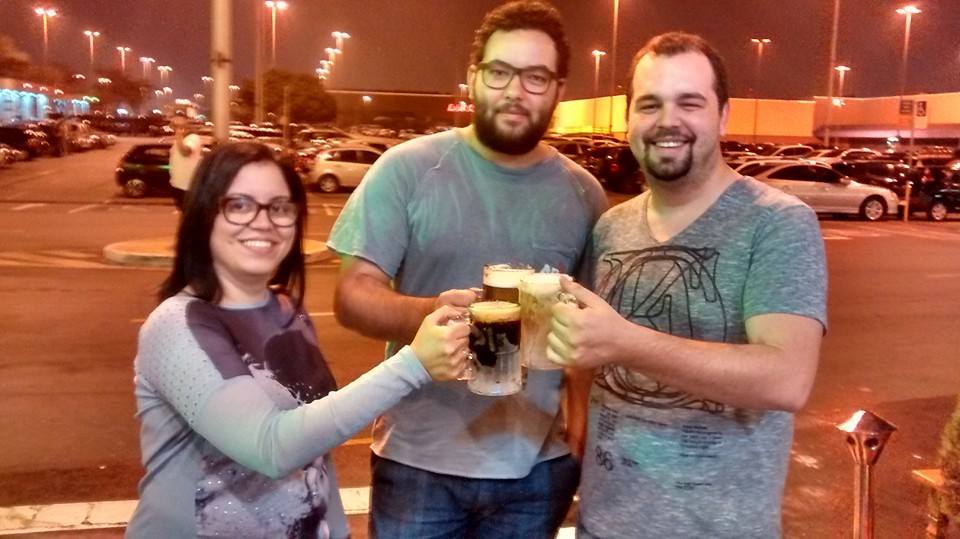
“One day, in retrospect, the years of struggle will strike you as the most beautiful.” – Sigmund Freud.
Fast Forward
A couple of years later, we had over 30 clients, driving millions of organic downloads to them. Word of mouth was finally picking up. Our pipeline was always constantly receiving new leads.
These are the high-level steps we followed to go from Zero to Hero:
- Reduced our pricing to get our first three to five clients
- Rebranding our offer and making our cases more modest
- Getting our first big client
- Build a success story for every project we ever worked
- Building and acquisition machine
- 10x our price using value-based pricing
**IMPORTANT NOTE**
This article benefits from hindsight. Although all those initiatives were indeed planned, it’s easy to look back at it now and say it was all meant to be. Please take what you read here with a pinch of salt.
#1: Reduced our pricing to get our first three to five clients
Instead of charging R$ 2.500/month, which we believed to be the fair price for our services, we reduced it to R$ 950 for our first clients.
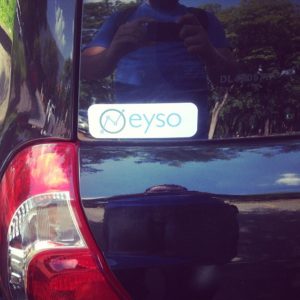 Our primary acquisition channels were Facebook and LinkedIn groups on App Marketing, Meetups, and word of mouth from friends who believed in us.
Our primary acquisition channels were Facebook and LinkedIn groups on App Marketing, Meetups, and word of mouth from friends who believed in us.
After talking to people at these meetups, we found out that many app founders were launching their apps without even knowing what they could do to increase their chances of success by applying a few best practices. So we created a “launch package”: the first set of title, keywords, and description, as well as guidance on their screenshots – all for R$ 950.
It worked: we managed to close the app to whom we pitched this package. The app was called Fashion85. We could not believe how easy it was to close that deal.
This deal made us realize that this was maybe a viable business.
After that one, we closed a few more in the same format: pitching customers directly at events and offering our launch package.
During the couple of years to come, we’d still use it as a strategy to get new customers. Once the launch was done, we’d upsell them into a recurring service for 3-12 months.
#2 Rebranding our offer and making our cases more modest
At first, we’d pitch our service as “SEO for Apps.”
It was the most obvious thing we could do: give a familiar name to something that sounded too off for most people.
We couldn’t be more wrong.
This test failed miserably as we faced a more serious problem: SEO was going through a bit of crisis. Many founders believed it was just a bunch of short-term hacks that wouldn’t last for long. Together with the fact that the results we used to highlight from previous customers seemed too good to be true, we quickly realized we had to change our strategy.
Overseas, we noticed that other players were using the term App Store Optimization, which we also adopted and took to market.
Although customers didn’t know the term, they were much more receptive to it as it was seen as a newest-secret-most-people-yet-don’t-know-about. That gave it the sense of novelty and excitement we were looking for. The big companies wouldn’t buy it – at first – but the early adopters were more than eager to hear about it.
We’d still use the SEO analogy often to explain what it was, but we’d reinforce it was a different game.
Also, we made an effort to make our first success stories sound slightly less spectacular, so it was more credible. This was funny, by the way: people would prefer to hear we could grow their downloads by 20% – but not by 5x. It simply sounded much more credible.
That combination of rebranding our service and making our portfolio more modest helped us get to our first 5-10 clients.
In parallel, we were also dealing with another problem:
#3: Getting our first big client
Although we managed to sell a handful of launch packages, we were still far from closing more prominent clients for who we could charge more and stay with us for the long run.
Also, we realized we were being rejected because we lacked a big name in our portfolio (“if others don’t trust you, then I can’t trust you either”). Not having a famous name was becoming more of a problem as we tried to reach a larger audience – and having more small clients was seen as a signal that our service was not different from black hat strategies.
Oh, boy!
Our solution was to hustle our way into a big client to solve that problem once and for all.
Movile was our target. It was by far one of the biggest Brazilian app companies out there (still is, actually), and we had a couple of friends working there. That was all we needed.
We pitched them and negotiated for a few weeks. It was the second toughest deal we negotiated during those 2,5 years. Our track record wasn’t that impressive yet. Still, we managed to close the deal.
But that’s not the end of the story. Now the pressure was on.
We knew we were able to deliver tremendous results for small players, but we were not sure we could deliver anything for such a big player (their app, PlayKids, was already in the top 3 of its category). This was our own test of competence to understand if we were really ready or not for what was to come.
After all, we did manage to increase their downloads by 25%. YES!
That was more than enough to build the success story we needed. We were over the roof with those results, but the client, not so much.
Because I was so desperate to close, I agreed to help them optimize a few landing pages for their paid ads, which turned out to be a big mistake. I didn’t have the headspace to work on it and then ended up getting fired by the client for not fulfilling our promise entirely. Ouch.
A bittersweet victory, after all.
Still, having that business case was now our trophy: we’d highlight it on our home page, in lectures, and sales presentations. The best part: it was working just like we thought we would.
>> Do you want to master ASO? Click here. <<
#4: Build a success story for every project we ever worked
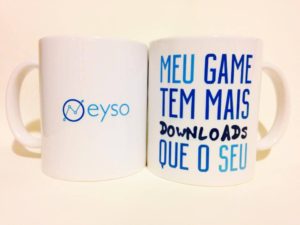
Our favorite mug
Since then, creating a business case for every client, we had become a top priority. This was by far the easiest part but maybe the most crucial for our success.
Little by little, we started building cases for every app category out there: transportation, lifestyle, productivity, health, games, and so on.
That’s when things started to get more manageable on the sales side.
#5: Building our acquisition machine
We had three primary sources of leads:
- The free ASO diagnostic tool on our website
- Events and PR
- Word of mouth
In the first six months of operations, our leads would come basically from lectures and meet-ups we’d host or attend.
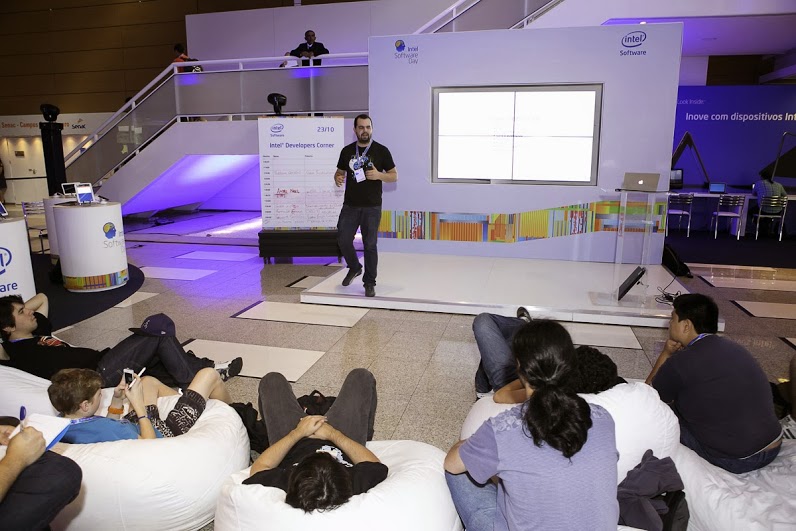
Talking about ASO @ Intel for Developers.
Even after that initial traction, this continued to be our primary growth lever. We just updated our game: after a while, we got invitations to volunteer at incubators and Startup Weekend (a weekend-long hackathon by Google). Those events would be filled with tech people, which would see us as an authority in the app industry and spread the word to their own companies.
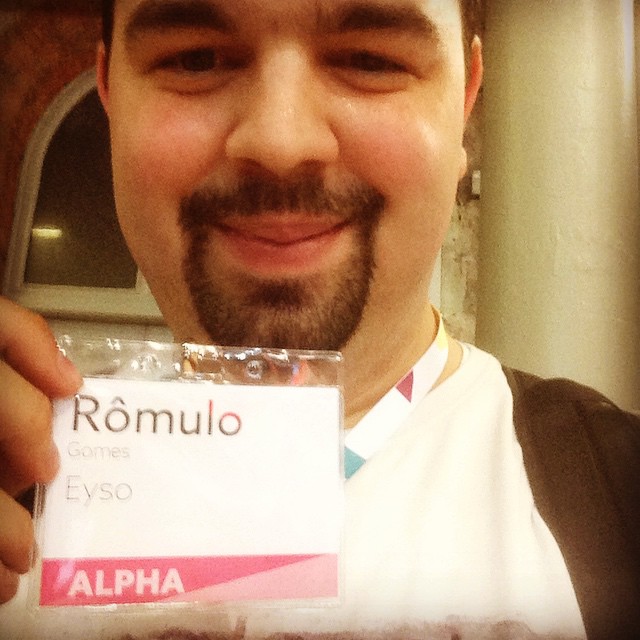
A super happy me at the Web Summit in Dublin (2014).
Eventually, we got a few mentions in the press, which sped up the flywheel, driving even more recommendations. At some point, this became a (good) problem, with too many proposals to be sent, forcing us to productize our offer and standardize the price.
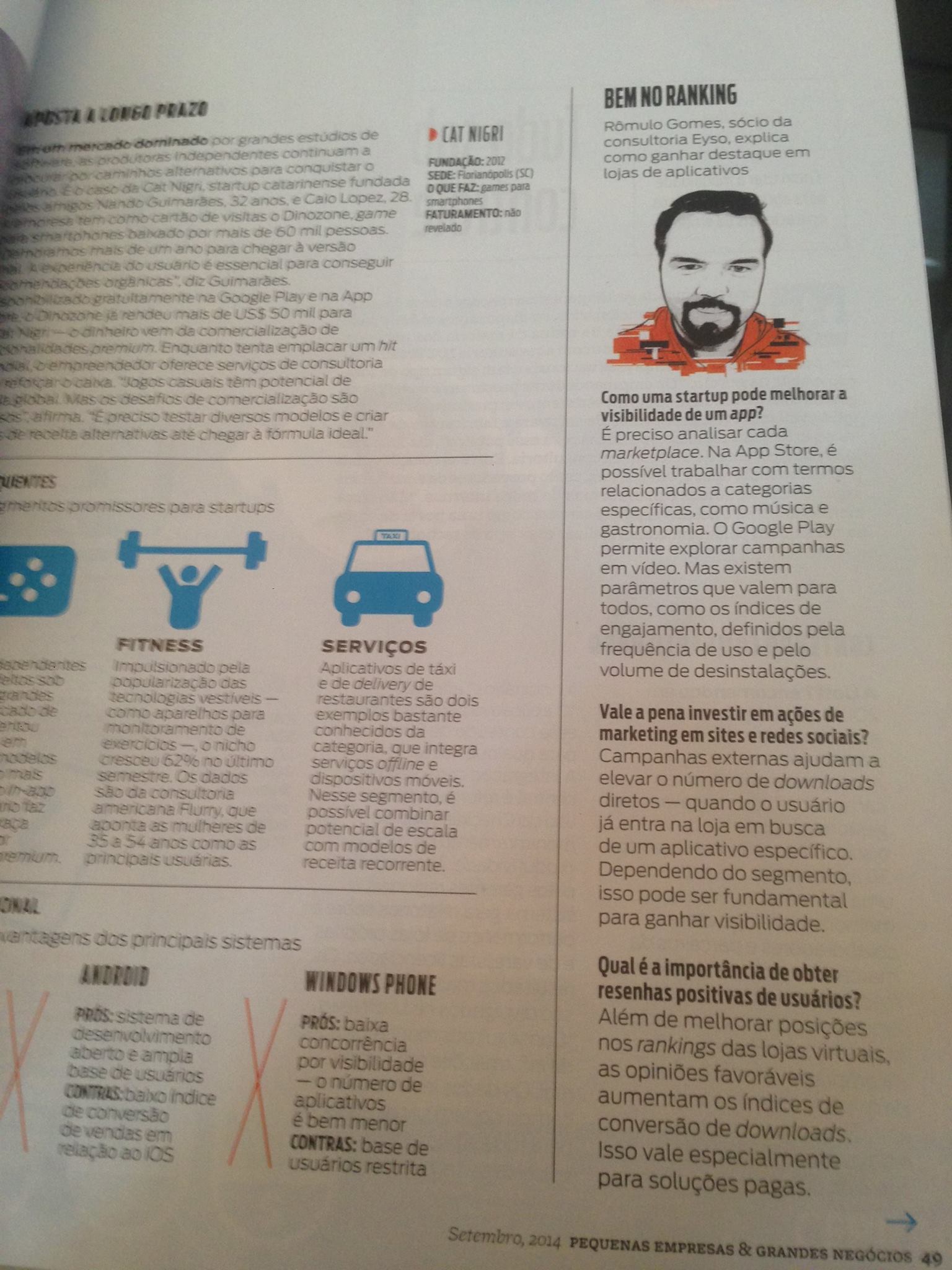
Interview for PEGN (Pequenas Empresas, Grandes Negócios) on ASO.
In parallel, our product-led strategy was based on a simple diagnostic tool we built. Anyone could go to our website, look up their apps, throw their keywords and get a free diagnostic (after providing their email address, of course).
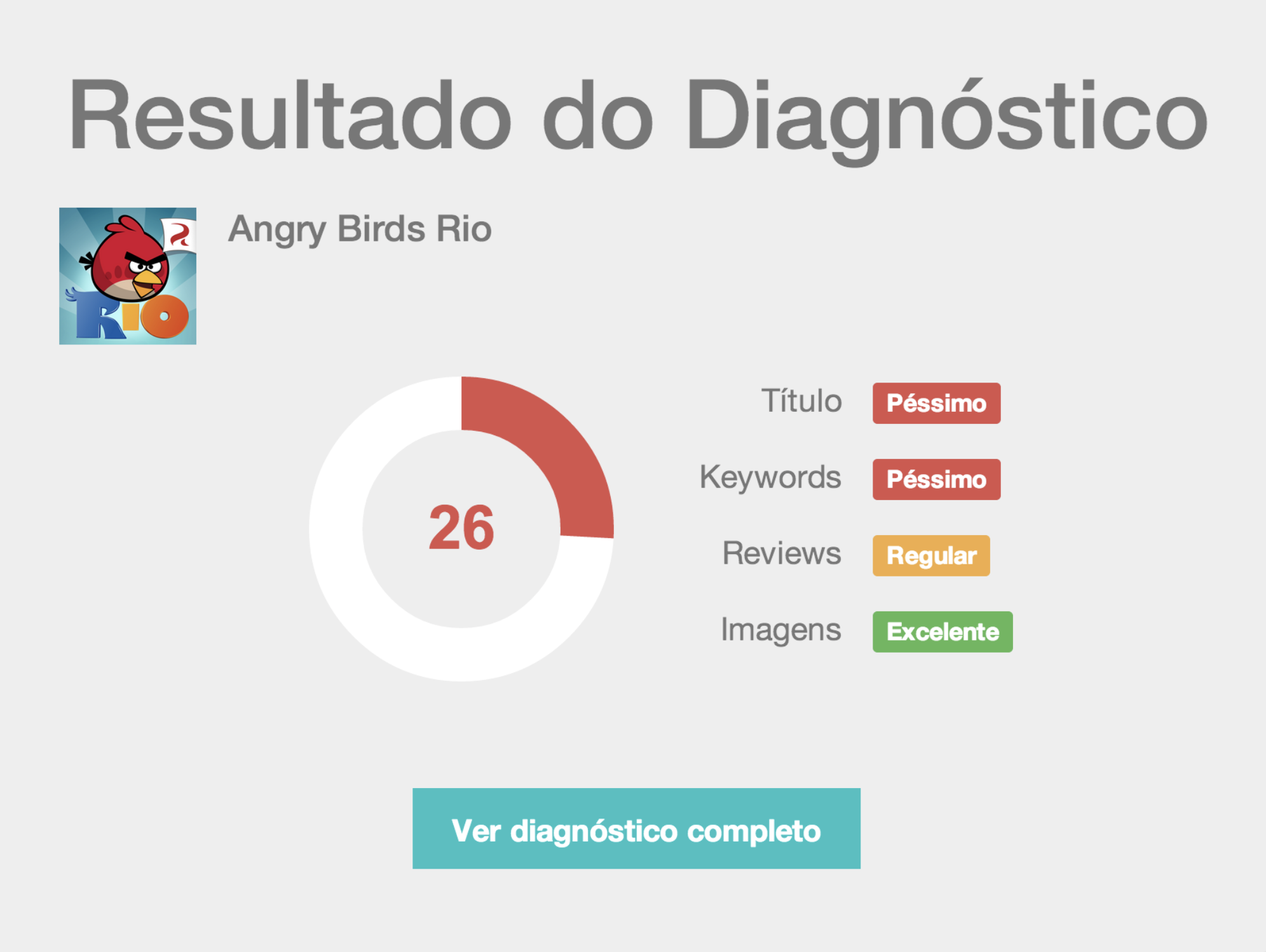
Eyso free diagnostic example.
We didn’t have enough SEO traffic, so it took us a long time to get traction on it – like a year – but once it did, it became a reliable source of leads.
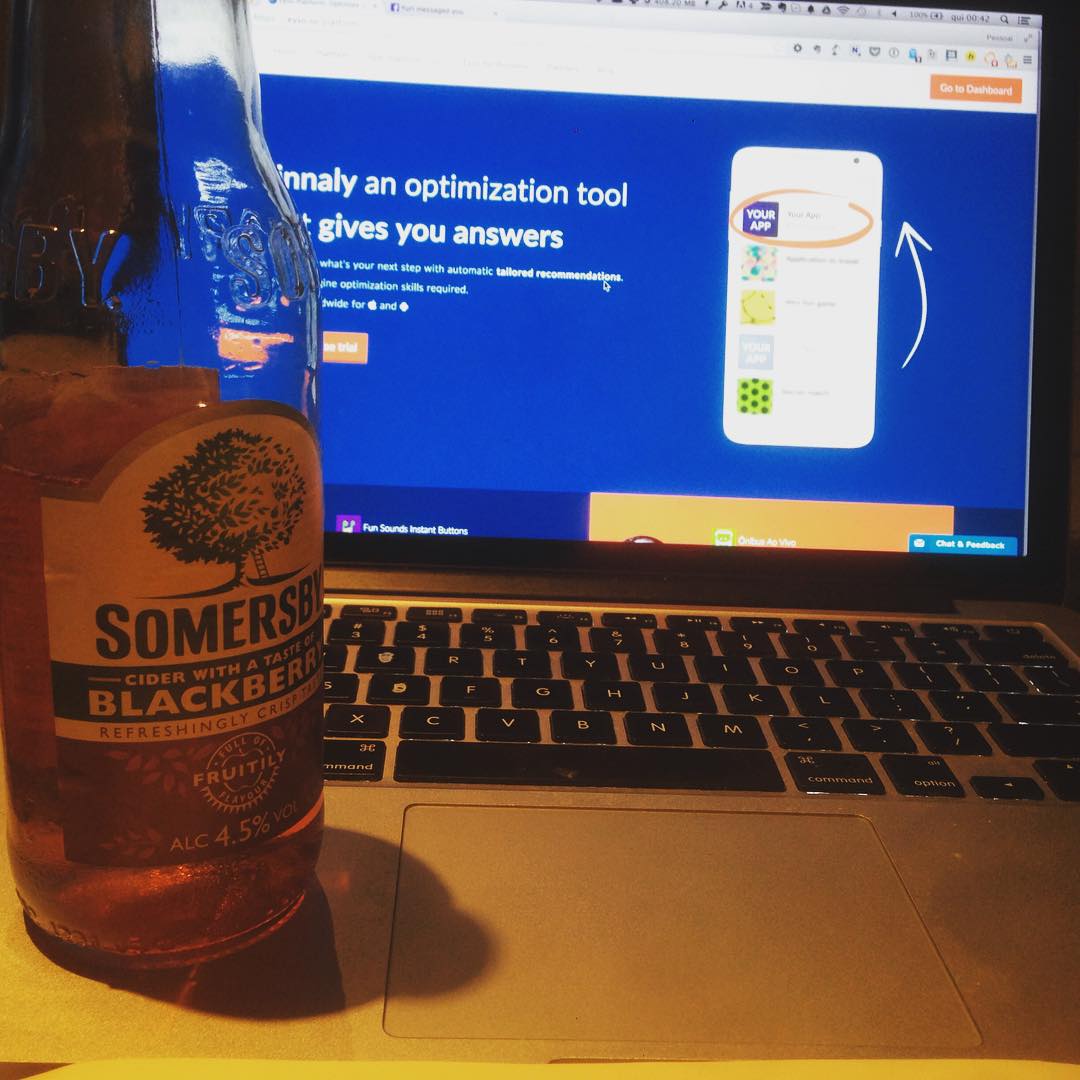
The only image I found where you can see our website.
From that point on, we’d just try to maximize how much we could charge based on the size of the company, which takes me to the last point:
6: 10x our price using value-based pricing
We now faced a different problem: we couldn’t attend to more clients because we weren’t ready to scale.
This is also where things started to get a bit sour, to be honest.
Our purpose was never to build this massive service business. We wanted to be a massive SaaS – that’s what we wanted.
Still, we were getting more and more leads for our ASO services, but practically none on our tool.
Because of that, we never took the whole training people thing seriously. Instead, we simply thought about how to make the business more profitable so we could have more money to invest in product development.
That was also the point where we realized that some customers were getting an insane amount of value from our services. Firstly because ASO scales up nicely, but also because we were advising clients on other areas such as paid media, CRO, and retention strategies – making our service much more sophisticated than it was supposed to be.
Our new pricing strategy was: based on the success of previous customers, we’d project how much we could grow our client’s apps.
Each install would have a value attached to it that we’d translate into revenue (if the app weren’t monetized, we’d calculate how much we could potentially save on paid acquisition for the client).
We knew we would deliver at least 30% growth in 3 months, based on the performance of past clients. By now, we could also quickly identify apps with great product-market-fit, making our lives much easier.
The formula was something like this:
Avg downloads (90 days) x ASO Target = Expected Downloads
Then we’d just have to figure out how much was an app install worth to that client to have a rough idea of the value we’d deliver. Then we’d price ourselves based on that (usually around 10-15%).
So what started around R$500 quickly became R$ 5.000, all the way to R$ 15.000/month for one client in particular.
That was the last tactic we used to grow our business.
What didn’t work
There was also a few things that didn’t work. I’ll not go deep into it, but it’s still worth mentioning it:
- Running paid ads
- Partnerships with agencies
- Partnerships with other tools
- Hiring interns to delegate work
- Expand internationally
If it was going so well, why did it still fail then?
The service side of the business never failed. We just gave up on it.
As I mentioned before, we wanted to build a platform: a badass worldwide SaaS business. Instead, we created an interesting services business, which wasn’t what we wanted.
So, after 30 months, we shut down our operations. But that’s a story for another day.
📕 What I’ve been reading
Churn Rate Myths (Reforge): I absolutely love this article. If you’re trying to reduce churn at your company, you must understand these three common myths.
Achieve your goals with less grinding: great article on how your perception can influence our sense of difficulty towards our goals. I’ve been struggling with this lately, so it was the perfect timing for me to read this article.
Joyland by Stephen King: I’m officially on a non-fiction detox this summer and I can’t recommend it enough if you’re into thrillers. The writing from Stephen is so smooth, the guy is an absolute legend.